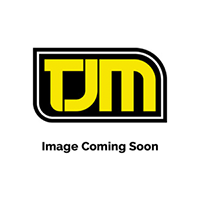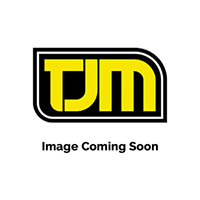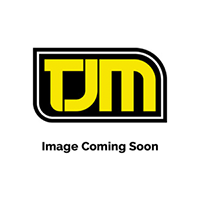Towing with a Caravan: 7 Tips & Tricks you Need to Know
Trekking across the country with your family, or on your own, with a portable home fixed to the back of your rig for months on end is an experience like no other. It gives you the opportunity to see what this land really has to offer, and marvel at its many landscapes and iconic wonders without having to worry about heading home early, setting up a shelter or finding suitable accommodation.
However, regardless of your experience level, towing a caravan is a lot more complex than simply hitching up to any stock standard tow ball and hightailing it to your holiday destination. It requires a capable 4WD that’s designed to handle all of your towing and journey requirements, as well as an understanding of the rules and regulations when it comes to towing, safety and initial setup.
And who better to give us their expert insights, tips and tricks when it comes to towing with a caravan than our official partner, TAG Towbars. TAG has been designing and manufacturing towbars in Australia for over 30 years, and has one of the largest ranges of towbars and wiring solutions in the country. In fact, their comprehensive range of towbars and towing accessories covers over 90% of the vehicles on the road in Australia today!
So, without further adieu, let’s dive right into the top 7 tips & tricks you need to know when it comes to towing a caravan.
And we kick things off with a couple of tips to make hitching almost effortless.
1. Equip your 4x4 with a reverse camera
Regardless of your experience level, reversing your 4x4 to hook your caravan up (even with someone guiding you) can be a difficult task. Basically, if you’re out of alignment even slightly, you have to repeat the process time and time again until it’s safe and possible to hook it up.
This is where a reverse camera comes into play.
Fortunately, the majority of newer vehicles come pre-equipped with a reverse camera. Some even have reversing guidelines and sensors to let you know exactly which angle your 4x4 is heading and how far away your caravan hitch is.
For older models, however, there’s a range of permanent and portable solutions you can get to make reversing a whole lot easier. Please note that permanent solutions will need to be fitted to your 4x4 by a licenced automotive accessories professional.
TAG also said that reverse cameras are also great for safety, particularly when caravanning with kids. It’s an effective way of mitigating dangers associated with the pinch point (or crush zone) of your tow ball and drawbar.
2. Have a process
Once you’ve successfully reversed your 4x4 up to your caravan, it’s time to hook it up.
Now, attaching your caravan to your 4x4 can be pretty straightforward. However, if the weather is not exactly optimal and you find yourself rushing to hit the road again, this can lead to mistakes or improper connections.
The best way to combat this according to TAG is to have a process that works for you – or a step-by-step guide.
For example:
- Step one – Attach your hitch and ensure it's firmly connected, then put the cap on.
- Step two – Fix your chains but cross them first – meaning, your left chain goes to your right point on your 4WD and your right chain to your left point. This creates a cradle or safety net that will catch your hitch if it comes off.
- Step three – Attach your electronics for your brake controller and brakelights.
- Step four – Attach your break safety.
- Step five – Disengage your caravan’s handbrake.
- Step six – Take off your jockey wheel.
- Step seven – Remove any and all wheel chocks.
- Step eight – Conduct a final walk around. Check all your caravan’s legs and make sure they’re up, check each tyre to ensure every chock is stowed away, make sure every window and storage container is closed and secure, your awning is packed away, and then finally check your connections once again before you hit the road.
Depending on your vehicle and caravan, some of these steps may not apply so it’s best to create your own guide or process.
3. Get a brake controller

If you’ve got a caravan, and you’re heavy, make sure you’ve outfitted your rig with an electronic brake controller.
Now, electronic brake controllers are legally required on all caravans and trailers where the gross trailer mass is more than 2000kg, however, the key here is to equip your rig with a good one and familiarise yourself with it accordingly.
Not sure what an electronic brake controller actually does?
Essentially, an electronic brake controller allows you to apply brakes, in conjunction with your 4x4, to your caravan. So, whenever you brake to slow down or avoid a collision, instead of your caravan decreasing its momentum at a different rate, it will brake and slow down at the same speed for greater control and improved safety.
Electronic brake controllers, such as the TAG CURT Spectrum-2 Brake Controller, can even be finely tuned to adjust how much braking effort you need when you’re on the road. And at the flick of a switch, you can also activate its manual setting which is great if you’re coming down a range or you want to give your brakes a bit of a rest.
TAG also push the boundaries when it comes to tech with the Echo Mobile Trailer Brake Controller. This amazing little gadget wirelessly connects to your smartphone via Bluetooth with a customisable app which stores multiple vehicle-trailer profiles, allowing you to control and monitor all trailer brake activity right from your own device!
A big tip from TAG is, whenever you’re all hooked up and about to hit the road, test your electronic brake controller by pressing the manual button when you’re rolling forward on flat terrain.
The second you press it you should feel your caravan’s brakes activating and force your 4x4 to slow down.
4. A good quality towbar

When it comes to towing a caravan there’s virtually nothing more important than the actual towbar itself. This is the lifeblood that allows the camping or touring adventure to happen in the first place – that’s why it pays to get a good one.
But how do you find a good one? And what do you need to consider?
First and foremost, you need to make sure your towbar is strong, reliable and provides optimum vehicle clearance for off-road applications. Unfortunately, more often than not, the majority of towbars in the market struggle to meet all three of these requirements, let alone one or two.
TAG Towbars, however, now that’s a different story.
TAG has been designing and manufacturing towbars in Australia for over 35 years now, and testing every single one of them to meet the stringent standards of ADR62/01. The result is the strongest, most reliable, 4x4 equipped towbar range to ever hit the market. And leading the range is the TAG Extreme Recovery Towbar.
The new TAG Extreme Recovery (XR) Towbar has been engineered for professional trade and fleet applications as well as adventurous off-roaders alike, needing to get themselves and their convoy out of the most challenging recovery situations.
Firstly, it features an 89mm x 89mm Extreme Duty Reinforced Crossbar for unrivalled strength and pulling power that’s finished in a highly durable textured powder-coat.
Secondly, its flush chassis-mounted profile provides greater off-road clearance for improved departure angles, while its top mounted plug allows for easy access and protection from rare ground impacts. The real highlight though is the dual WLL 4500kg load-rated recovery points.
Cleverly integrated into the unique 3-piece design side arms, this novel addition to a towbar comes complete with bevelled edges to suit soft shackles. With its incredible load-rating, it’ll give your rig an extra recovery point at the rear of your 4x4 to easily get your mate or your towed vehicle out of a jam in a hurry.
Throw in an extreme-duty drop hitch in a matching powder-coat finish, and a zinc tow ball to reduce corrosion and wear, and you’ve got all your towbar bases well and truly covered.
5. A suspension system designed for towing
If you’ve got a caravan fixed to the back of your rig, chances are you’re going to be heading off-road to the perfect camping spot as opposed to just doing some light cruising.
And when that’s the case, you need a good quality suspension system that can handle the Australian Outback – no matter where you might find yourself.
Why is a suspension system so important when it comes to towing?
When you purchased your 4WD, you purchased a vehicle equipped with a factory standard suspension system designed for mainly driving on paved, even roads.
The second you leave flat, nicely laid asphalt roads and enter nature’s playground full of ruts, uneven terrain, holes and hazards in the way of large rocks, tree branches and stumps, your rig will be bouncing all over the place and become virtually impossible to control.
And this becomes doubly true when you add a 2-3T caravan on the back.
The answer is an aftermarket suspension system that will provide better handling and performance across the board, while allowing your vehicle to tow a caravan easily and even take more weight.
And the best suspension system provider on the market designed for the hustle and bustle of off-road towing and touring is XGS.
XGS Suspension Systems go one step further than the industry norm by identifying your off-roading, load carrying and overall driving needs, ensuring that your 4x4 is well-equipped to handle any terrain and environment, even in the toughest conditions, you might find yourself in.
And when you’re towing a 2-3T caravan containing all your essentials, resources and survival gear, you’ll want nothing but the best suspension system on the market to get you to your destination and back again without a hitch – pun intended.
Featuring three highly innovative suspension profiles, including the revolutionary XGS Remote lift kit that allows you to adjust your suspension setup at the turn of a dial, along with an incredible 0-75mm lift, innovative piston bores for impeccable damping potential and shock durability, high durability rubber brushes for enhanced flexibility, noise reduction and lifespan, and so much more!
Never before has the industry seen such an impressive, highly innovative suspension range hit the market – and for avid caravaners it’s been a complete gamechanger.
6. Evenly distribute your load in the caravan
With so much storage space available now, inside and outside the caravan, you need to be careful where you store the majority of your heavy gear.
Too much gear up front, and you risk putting too much weight on the vehicle, too much at the rear and the caravan can fishtail.
TAG said, the best place to store all of your heavy gear is directly over the caravan’s axle.
This is your strongest point in the van and the best place to disperse weight without having to worry about how many kilos are up front and trying to mirror that at the back.
Another tip is to be frugal with what you pack. Only take the essentials you can’t live without. Also, try to travel with full water tanks before you hit the road, as it lowers the caravan’s centre of gravity and minimises weight shifting.
7. UHF communication

A simple saying, ‘it pays to know the way ahead’ couldn’t be more accurate when it comes to towing a caravan. And TAG said, the best way to know what’s coming in your travels is with a UHF radio.
A UHF radio allows you to chat directly to other road users or learn of any roadworks, hazards or anything else by plugging in to channel 40 - Australia's main road safety resource.
You can even radio a truck in front of you to know when it’s safe to overtake!
These little beauties are also the best possible thing to have in an emergency. Say your phone goes flat or there is no cell service out in the bush when you're caravanning, and something goes wrong or someone gets hurt.
You can use your UHF radio to contact emergency personnel or radio vehicles in the area if you ever need a jump start or a tow if you ever get stuck out in the bush.
